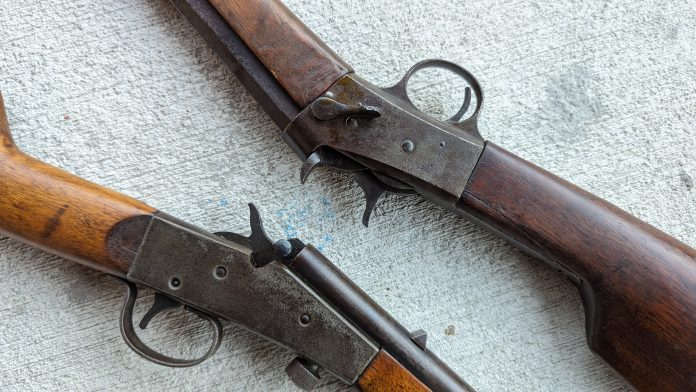
The world of early cartridge firearms is fascinating. The cash-strapped American military first adopted the famed trap door carbines from Springfield Armory. While these might have been the first cartridge firearms formally adopted by the United States military, they weren’t necessarily the only cartridge firearms standing around. The Rolling Block and Falling Block designs had established themselves with hunters, military forces, and more. A fairly common question is, what’s the difference?
Trap door carbines are easy to understand, but what’s the difference between a falling block and a rolling block? What exactly is a block in the first place? There were other cartridge firearms in this era, mainly the famed lever action rifles. These rifles fired something more or less equivalent to a pistol round or near enough to a pistol round. When you got into bigger, more powerful calibers, you needed a more robust system.

Loading the round into the chamber was as easy as sliding it into the chamber from the rear. The big problem to solve was what kept it there. When you fired the rifle, gas propelled the round forward and would most certainly propel the round rearward if allowed. You needed a block to keep the round from flying outward. Engineering in this era was wrapped around muzzle loaders where a block wasn’t needed.
One of the first arms races for pull-powered cartridge rifles meant for military use was to establish a blocking system.
The Rolling Block
The Rolling Block was mostly designed in 1863 and was used as a split breech carbine issued to US Calvary troops. It wasn’t until Remington took over the patent in 1866 that the Rolling Block we know and love was up and running. I imagine the Civil War and the need for established rifles and handguns really dampened the production of new firearms, especially when you’re already swimming in military contracts.
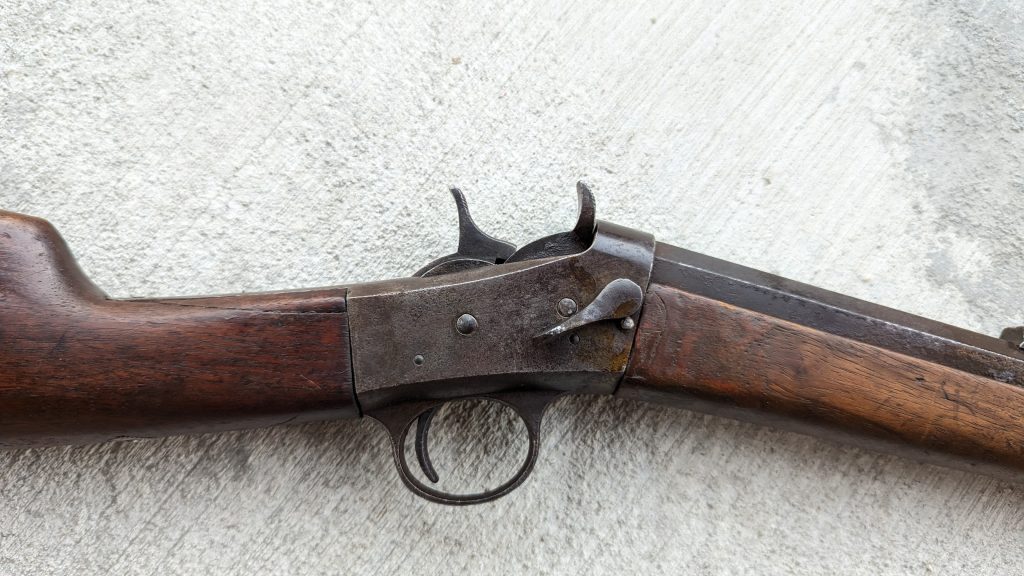
A Rolling Block rifle appears to have two hammers at first glance. In reality, it has a single hammer and a breech lever. The user would cock the rearward hammer o the locked position. Then, they use their thumb to manipulate the breech lever rearward, which exposes the breech. This breech lever rolls the block rearward. Thus, it was named the rolling block.
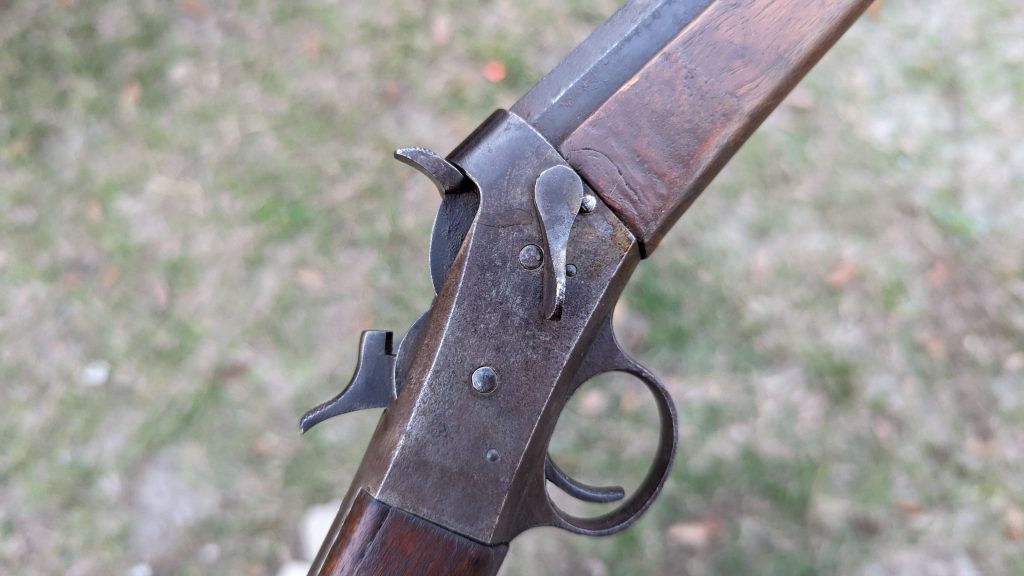
With the block locked to the rear, the shooter can insert a cartridge. The block is then rolled back into place. The rolling block contains the firing pin. When the trigger is pulled, the hammer drops and strikes the firing pin and fires the weapon.
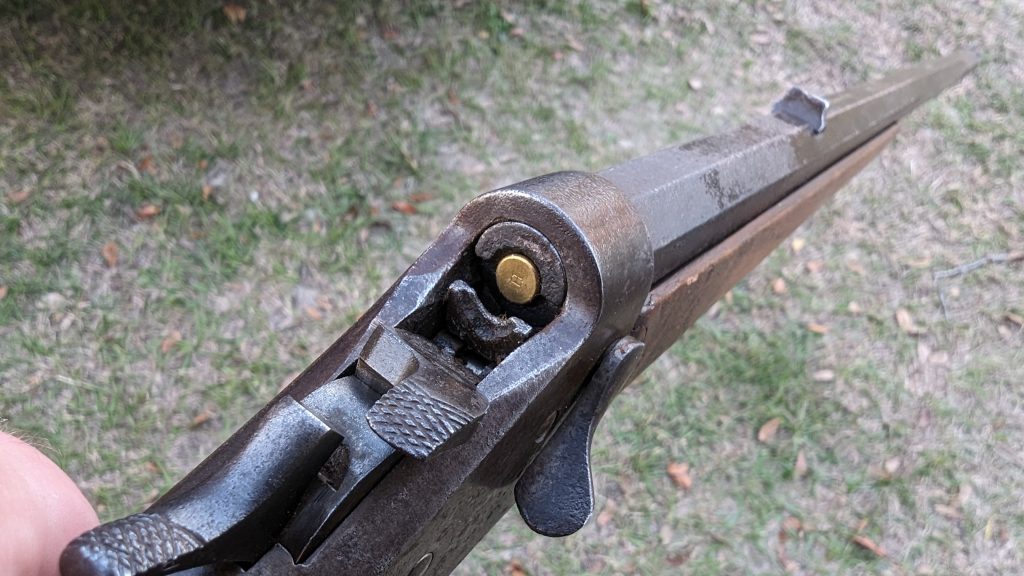
The Falling Block
The Falling Block design is much older than the rolling block. In fact, it dates back to the 1840s and likely earlier with custom gunsmiths. Sharps used the action in his rifles, so did the Belgians, and many more. After the Civil War, the falling block really took off with the widespread acceptance and use of cartridge firearms.

To shoot a falling block rifle, you have to use a specific mechanism to lower the block. With some guns, this is a lever beneath the action, much like the Winchester 1885 designed by John Browning. In smaller guns, like the Stevens rimfire rifles, it’s a lever on the block that the user presses downward. The shooter depresses the block in one way or another inserts a cartridge and raises the block.
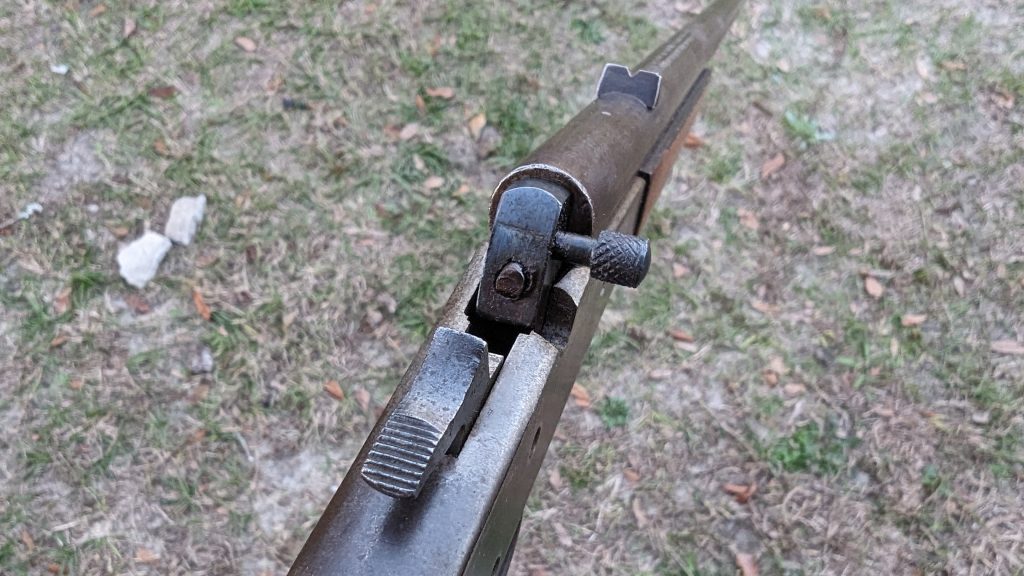
The firing pin is contained to the block. When the block is struck by the hammer, the weapon fires. The Falling Block carbines are still fairly popular and produced as expensive custom guns. These rifles are quite robust.

Which is Better?
Both systems are robust, well-made, and certainly well-proven. The Rolling Block design was successfully fielded by the United States military, including as the first official cartridge pistol adopted by the US Military. However, the falling block is a much more robust system. That’s why it’s still produced for high-pressure, modern calibers. Both are a ton of fun, and if you just want to play late 1800s shooter, either one will work. I have both a falling block and a rolling block .22LR and enjoy them both immensely.



